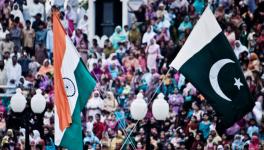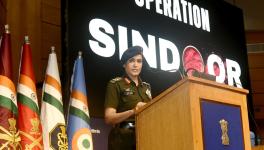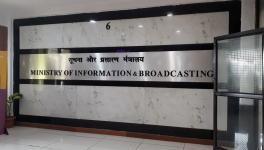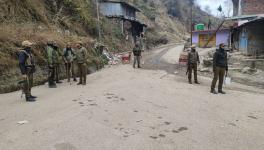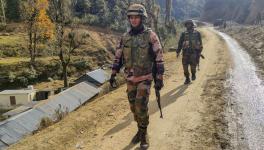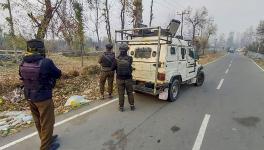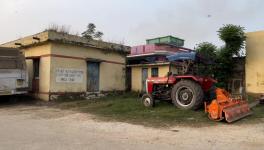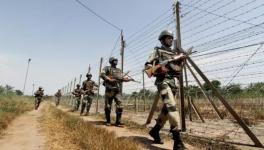Analysing Manpower Costs of the Military
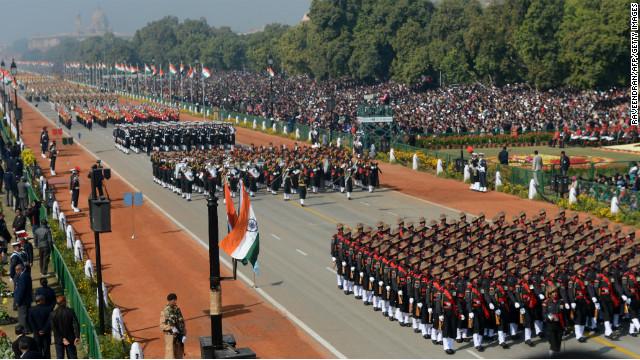
In a warning to the Combined Commanders Conference on December 15, 2015, Narendras Modi told the Services that country will not be able to prepare for future “by doing more of the same, or preparing perspective plans based on outdated doctrines and disconnected from financial realities”. He asked the Services that “when major powers are reducing their forces and rely more on technology, we are still constantly seeking to expand the size of our forces. Modernisation and expansion of forces is a difficult and unnecessary goal. We need forces that are agile, mobile and driven by technology, not just human valour”. On the face of it he was bang on target. Albeit it is when we look closely it becomes evident that he evades the main point.
First thing to note is that whereas Army spends 74 per cent of its budget on manpower costs, Air Force spends 35,5 per cent and Navy only 30 per cent of the budget allocation on their manpower. In contrast percentage spent on equipment was 49% for the Air Force and 46% for Navy compared to 10.5% for Army. Although 10.5% of the Army budget on Stores and Works at Rs 27,000 cr is forty per cent more than the Stores and Work allocations for Navy of Rs 6,500 cr and for Air Force Rs 10,700 cr.
Augmentation in Army’s manpower cost is tied to wars at home and volatile nature of ceasefire lines with China and Pakistan. As transgression and violations along Line of Control with Pakistan and Line of Actual Control with China have grown, manpower needs of the Army has kept pace. The new Mountain Corps being raised by the Indian Army with 35,000 recruits exhibits this. Besides Army also decided to raise its own counter-insurgency force Rashtriya Rifles in 1990 which today has 65 batalions for Jammu and Kashmir. Assam Rifles was raised in 19th century to protect Tea Gardens under British Raj and thereafter for military suppression of insurgencies in North East. Although funds for AR come via Ministry of Home Affairs, operational control rests with the Army, which also provides bulk of officer cadres to AR. Were CPMFs included since they too are deployed fighting armed conflicts at home and manning borders then the expanding size of the military, currently 2.7 million, becomes evident.
Government employment, according to the Seventh Pay Commission declined from 25.29 lakhs in 2006 to 23.21 lakhs in 2014, while ‘Central Police’ size rose from 7.44 lakhs to 9.80 lakhs in the corresponding period and will reach 1,125,093 in 2018. The CPMFs have been seeking parity with Army for their own personnel, because they claim that both, Army as well as CPMFs perform external as well as internal security operations/duties. In a presentation before the Empowered Committee of Secretaries, the Ministry of Home Affairs asked for a special allowance called CAPF Service Pay along the lines of Military Service Pay given to the Army personnel, which is over and above their salaries. They argued that the CAPFs “fulfill” all attributes required for MSP, which includes separation from their family and they are “key pillars of internal and border guarding, handle warlike situation and continuously engaged in operations”.
The data collected and collated by the Seventh Pay Commission Report shows that, as on 01.01.2014, out of 4,687,707 central government employees, no less than 2,744,755, or 55% belong to the military sector. This comprises 13,86,171 in the Defence Services, 9,60,162 in Central Para Military Forces, and 398,422 in Ministry of Defence (Civil). Significantly, eighty per cent of personnel in MoD (Civil) or 3,21,847 are “workmen” in Defence Public Sector Units. Another way of appreciating the significance of Military is to note that out of 8.57,764 employees recruited by the Central Government between 2006-2014, nearly fifty percent or 4,26,636 were recruits in the military sector.
Looked at from the point of view of total Pensions, in 2018-19, Rs 1,08,853 cr has been set aside for Defence Pension and Rs 46,430 cr for other pensioners including the CPMFs. Since CPMFs make up around one third of central government employees atleast Rs 15,000 cr is on account of CPMFs. In other words pensions outgo for service personnel as well as CPMFs is a staggering Rs 1,24 lakh crore. One reason for this rise in pension outgo is to make Military services attractive because of high instance of wear and tear experienced by the personnel because of prolonged engagement of decades in Counter Insurgency.
Again, according to the 7PC as on January 1, 2014, there were 51.96 lakh pensioners of which Military accounted for 24.15 lakhs and Civil Pensioners 27.81 lakhs. However, the composition of Civilian Pensioners is following: 17 lakhs belong to the Railway and Postal Service or the Commercial Departments and 10.81 represent ‘Others’ of which no less than half belong to CPMFs.
It ought to be a matter of concern that the combined strength of AFU’s, which is 2.7 million, makes up at least 50% of total central government employees. Equally alarming is that four Corps 3&4 in North East and 15&16 in J&K have been engaged in Counter Insurgency warfare for decades without end. In addition ninety percent of Central Para Military Forces (CPMFs) are deployed in nine central Indian States against the Maoists, J&K and NE. The number of Army personnel in 101 districts declared as “Disturbed” is no less than 500,000 at least, and CPMFs are 900,000 CPMFs in the three war-zones, Central Indian States, Jammu and Kashmir and the North East. This means that at least 1.4 million out of 2.7 mn personnel remain engaged in war against our own people.
Requirement for manpower is also determined by the approach to fight Counter Insurgency. In Nagaland and elsewhere in NE army went in for domination of each and every village. Grid system was tried in Sri Lanka and worked because villages were far apart and helicopters and heavy artillery could be used. In Kashmir because it is densely populated high collateral damage acted as a deterrent against using heavy weaponry. Thus Army went in for a grid system, which is essentially dividing up the affected area, packed with troops. Anyone traveling in Kashmir would observe the ubiquitous nature of Armed Forces presence. Besides, in J&K, the narrative propagated is of Pakistan as the main cause of problem faced by India, the border and the Line of Control too require mass of troops to “plug” infiltration. It is significant that in comparision to 2417 infiltration bids in 2001, these fell to 121 by 2015, and then began to rise to 371 in 2016 and 515 in 2017 directly as a consequence of the military crackdown following the killing of Burhan Muzzafar Wani. So much is made of infiltration although it had come down to a low of 121 bids in 2015, and then began rising in 2016 onwards because of the shoot-to-kill policy. Indian forces have also decided to keep the LoC alive and kicking through what they claim is a ‘tit-for-tat’ approach which aims at inflicting 3-4 times more casualties on Pakistan. This acts now is also meant to place spokes in the way of China Pakistan Economic Corridor, an important part of the Belt and Road Initiative of China. Thus the requirement of troops rises and augmentation becomes necessary with the policy regime chosen to meet this security scenario.
In other words Government speaks with forked tongue; speaks of bloated force but simultaneously engaged in expanding the role of the armed forces to solve problems caused by the Government.
So how much does the country, therefore, spend on internal wars when political resolutions are possible and returns on them are many times higher.
In 2018-19 allocations for JAKLI (Rs 1275 cr) and RR (Rs 6610 cr) comes to Rs7885 cr. It is worth noting that RR posting fetches 25 per cent higher salaries/allowances than the regular Army and is a coveted posting. In addition if we calculate salary and travel allowance for 500,000 personnel out of 1.5 million strong service personnel it means that thirty per cent of the outgo of Rs 1,18,966 cr, or approximately Rs 35,000 cr constitutes Army’s share of the financial outgo on account of CI. As for 1.2 million strong CPMFs whose 90 per cent is currently deployed in CI then approximately 45,000 cr is spend on CI. In other words country spends Rs8,000 cr on fighting wars at home. If one were to add the outgo on pension for Service personnel as well as CPMFs then the actual cost would be no less than 1,15,000 cr or Rs 1.15 trillion.
What is also worth keeping in mind costs on account of CI is primarily a cost being incurred because Government of India dismisses the need for a political resolution. Even in Naga areas where GoI has been engaged in negotiations since 1997 with the armed factions of the Naga underground neither has AFSPA been withdrawn nor is there sign of thinning of troops there. So while situation is normal for holding election, it is still considered “disturbed” with AFSPA invoked for Armed Forces of the Union.
In other words, instead of creating misconception about the bloated nature of the Armed Forces of the Union what we need to do is to probe why we need to fight wars at home instead of trying ever harder for reaching political resolutions. It is worth exploring as to why BJP-RSS government evades political resolution of conflicts within. For instance if talking about self determination constitutes high treason and to speak of autonomy considered anti-national then military suppression will beget its anti-thesis of armed resistance and the policy of suppression will make armed militancy once again popular.
In other words it is manpower demands for CI accompanied by making LoC and LAC unstable, which have contributed to making the Armed Forces of the Union a bloated and wasteful force. Therefore, when critics and “think tanks” blame manpower costs for eating up Capital Budget and adversely affecting acquisition of weapons to fight ‘two and half wars’ , they are being selective with facts. Fact of the matter is that the Capital Budget is more than adequate for weapon acquisition, and there is enough in allocations under Stores and Work for the Services in their Revenue Budget to meet almost all their needs. Scope for cutbacks and savings could improve by leaps and bound were indigenization of military production seriously pursued. However, real and sizable savings can be made in the “internal security” account through political initiatives and the peace dividend can effectively augment allocations for social sector as well as encourage productive and socially useful form of employment generation.
It is too much to expect a Government of bigots to consider such savings let alone effect this change. It is also difficult to believe that Congress party will undertake this task. But it is the silence of the left and democratic opinion makers in pursuing this task or propagating its redemptive value which is intriguing.
(Also read: 'Defence Allocation: Budgeting for Muscular Policy')
Get the latest reports & analysis with people's perspective on Protests, movements & deep analytical videos, discussions of the current affairs in your Telegram app. Subscribe to NewsClick's Telegram channel & get Real-Time updates on stories, as they get published on our website.









